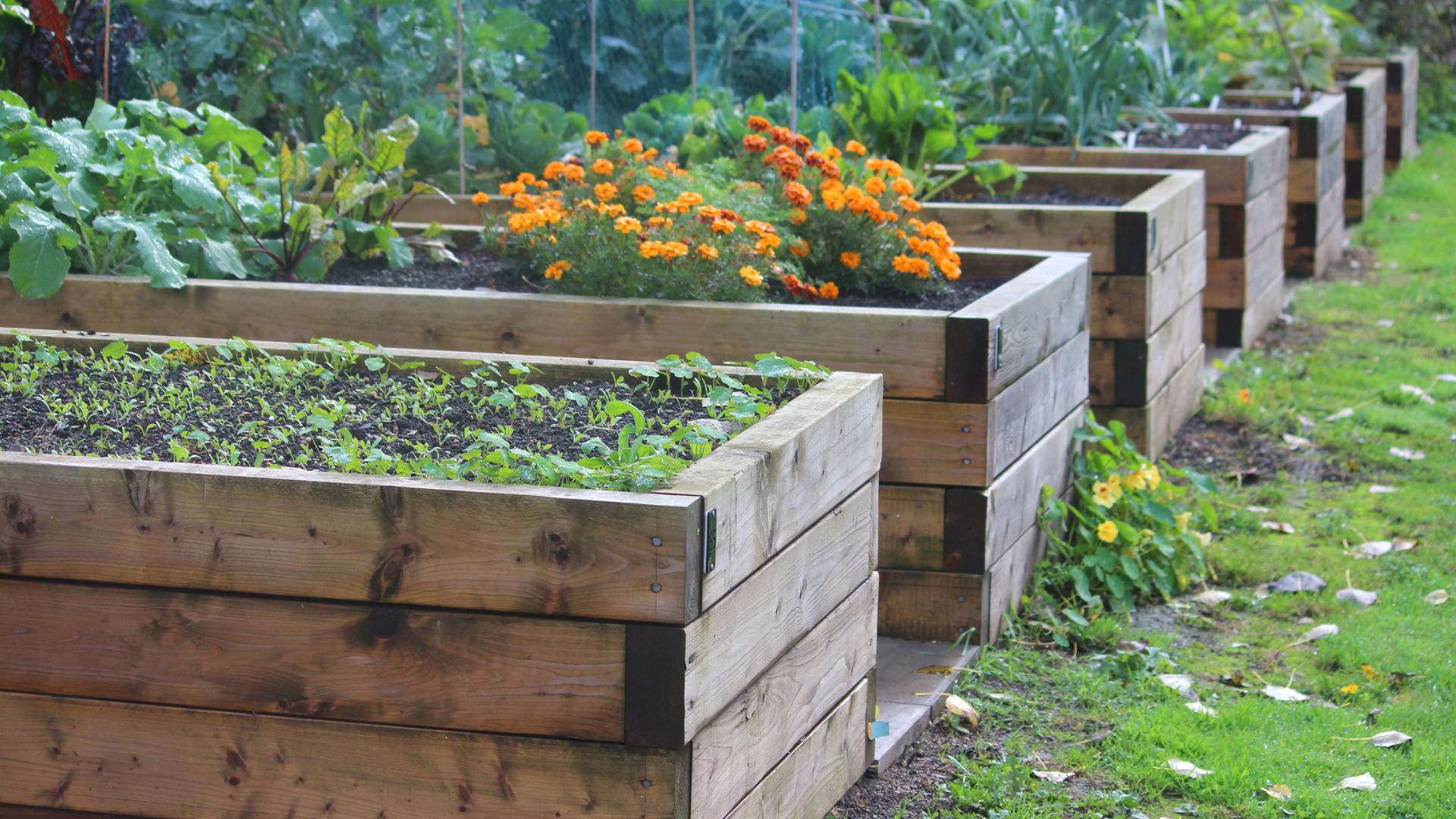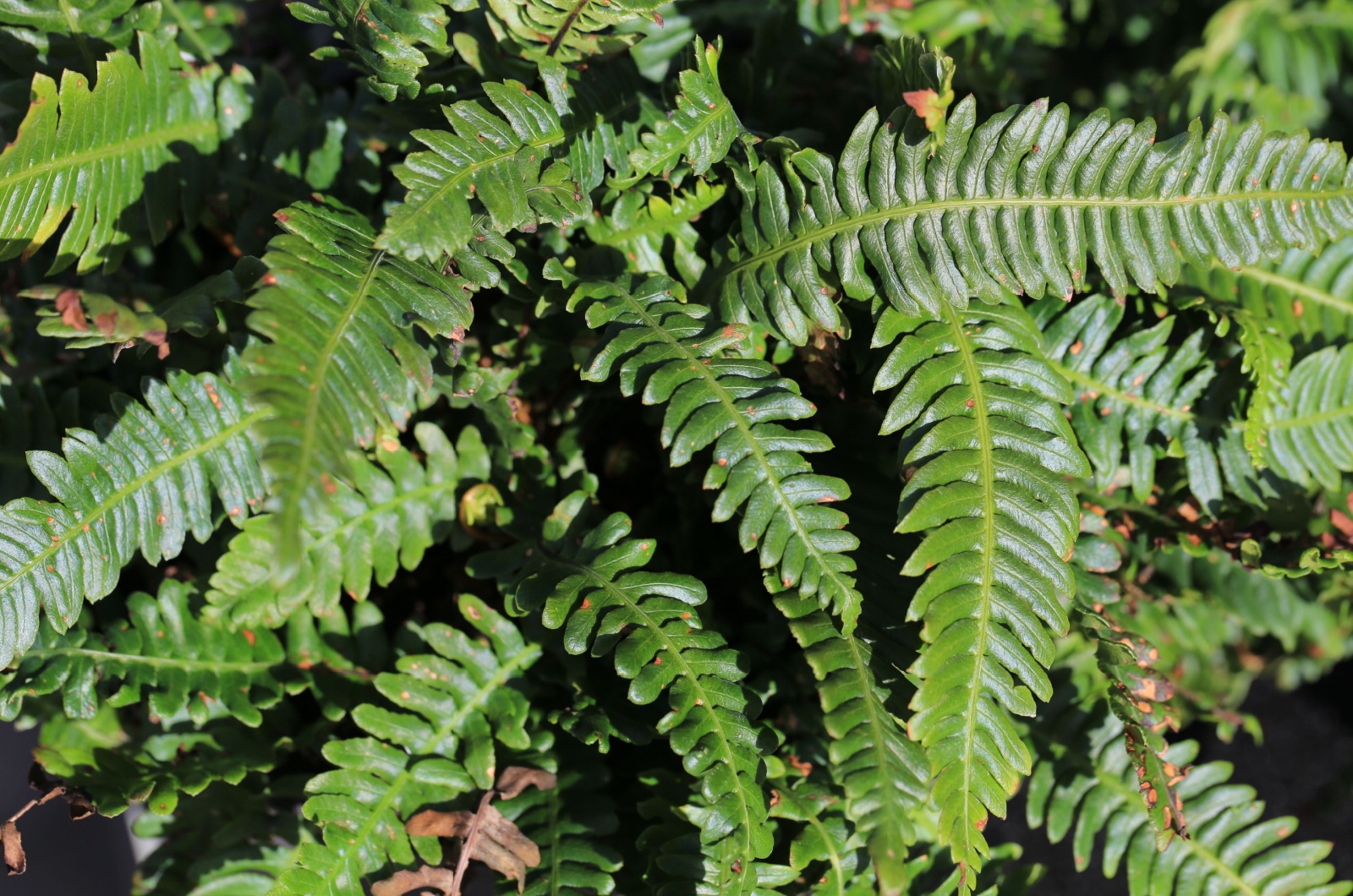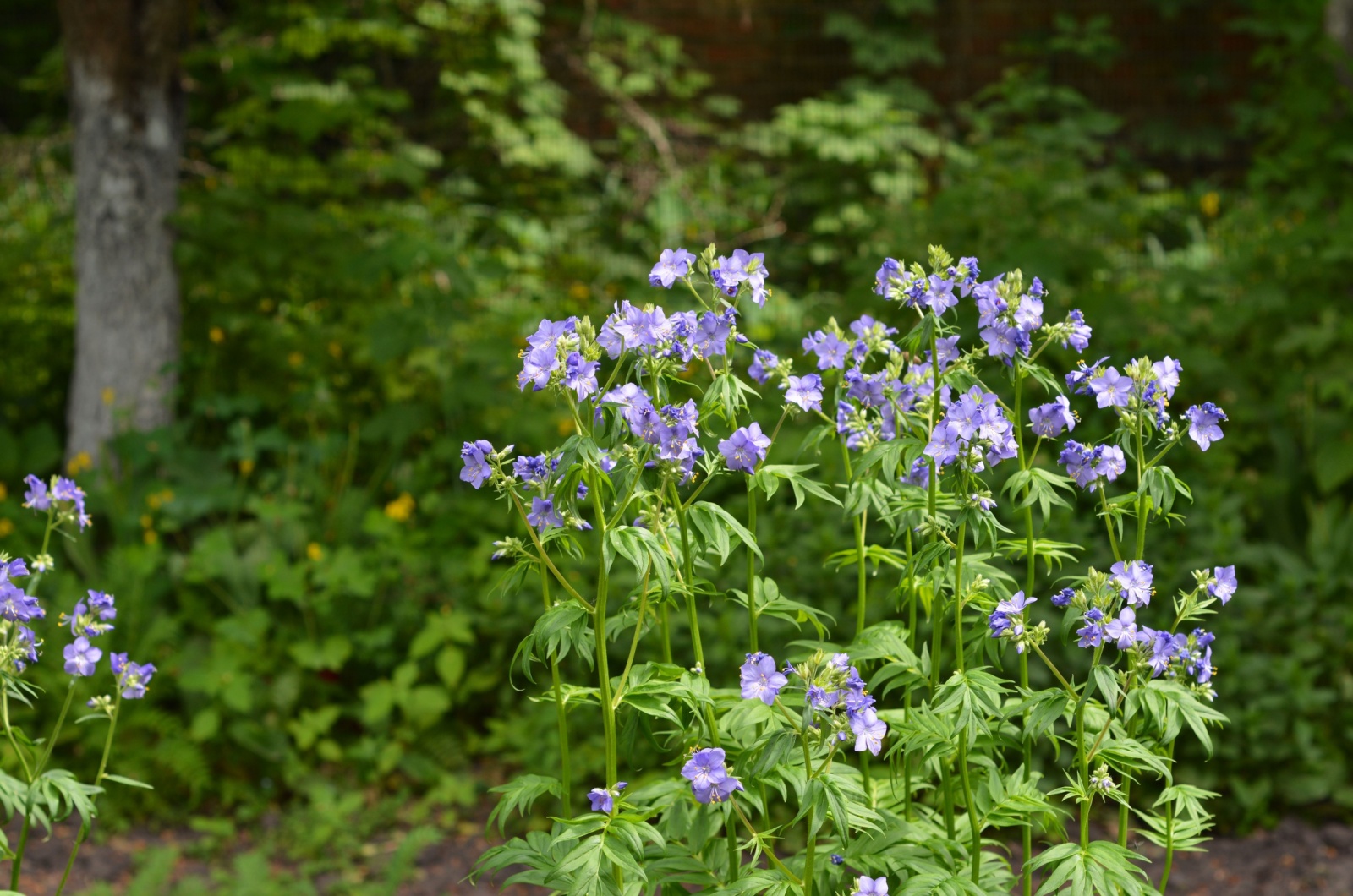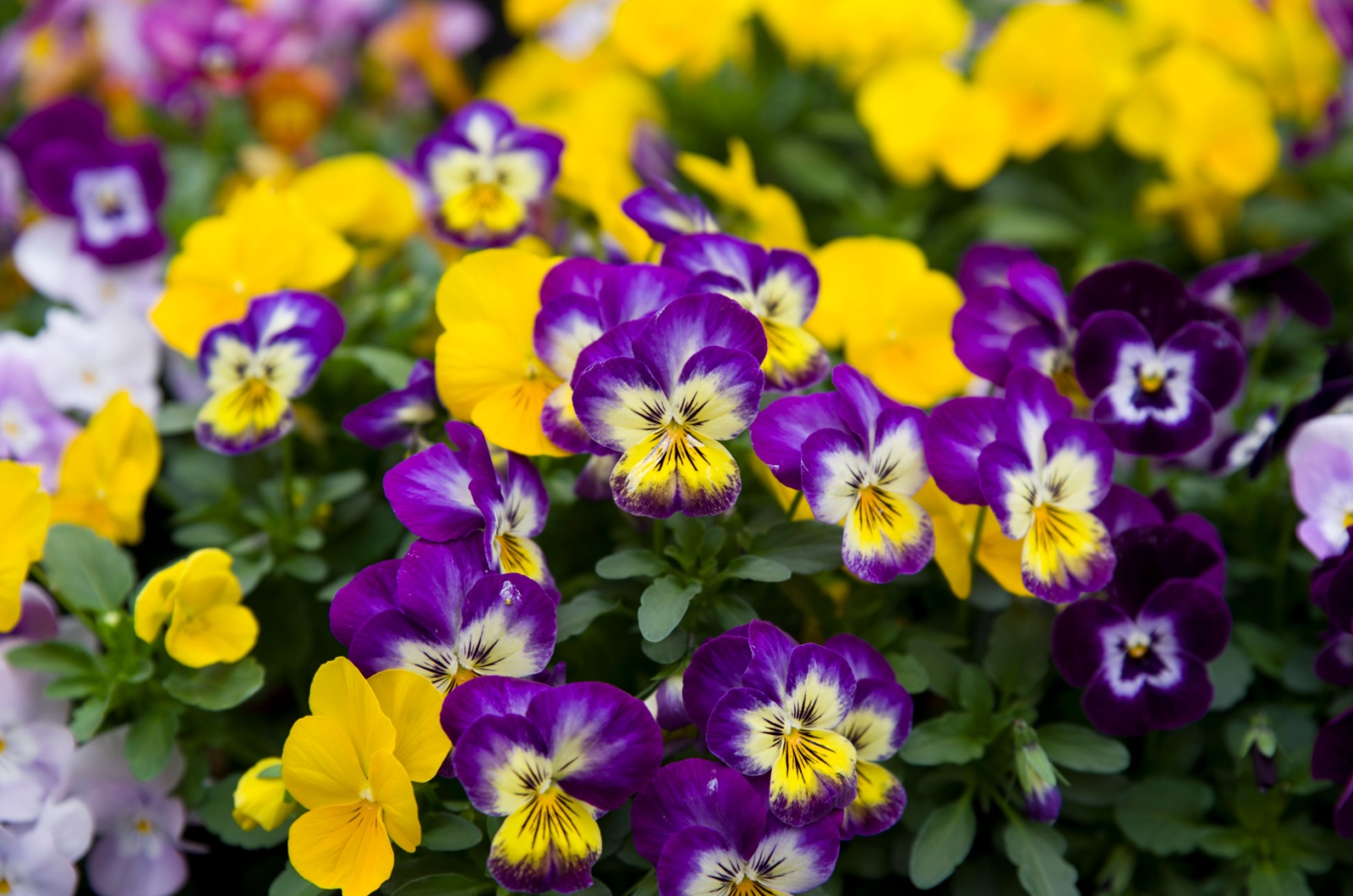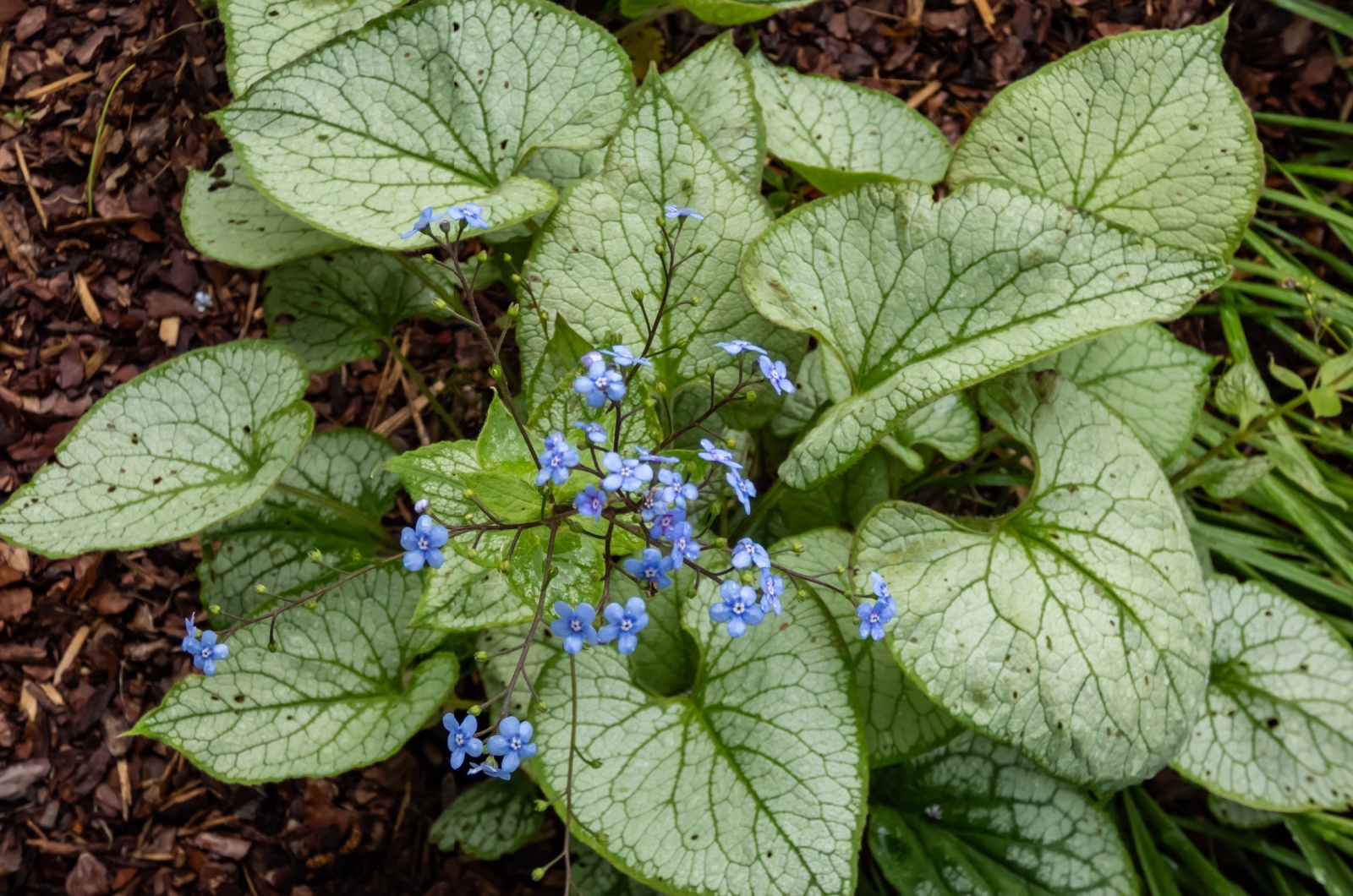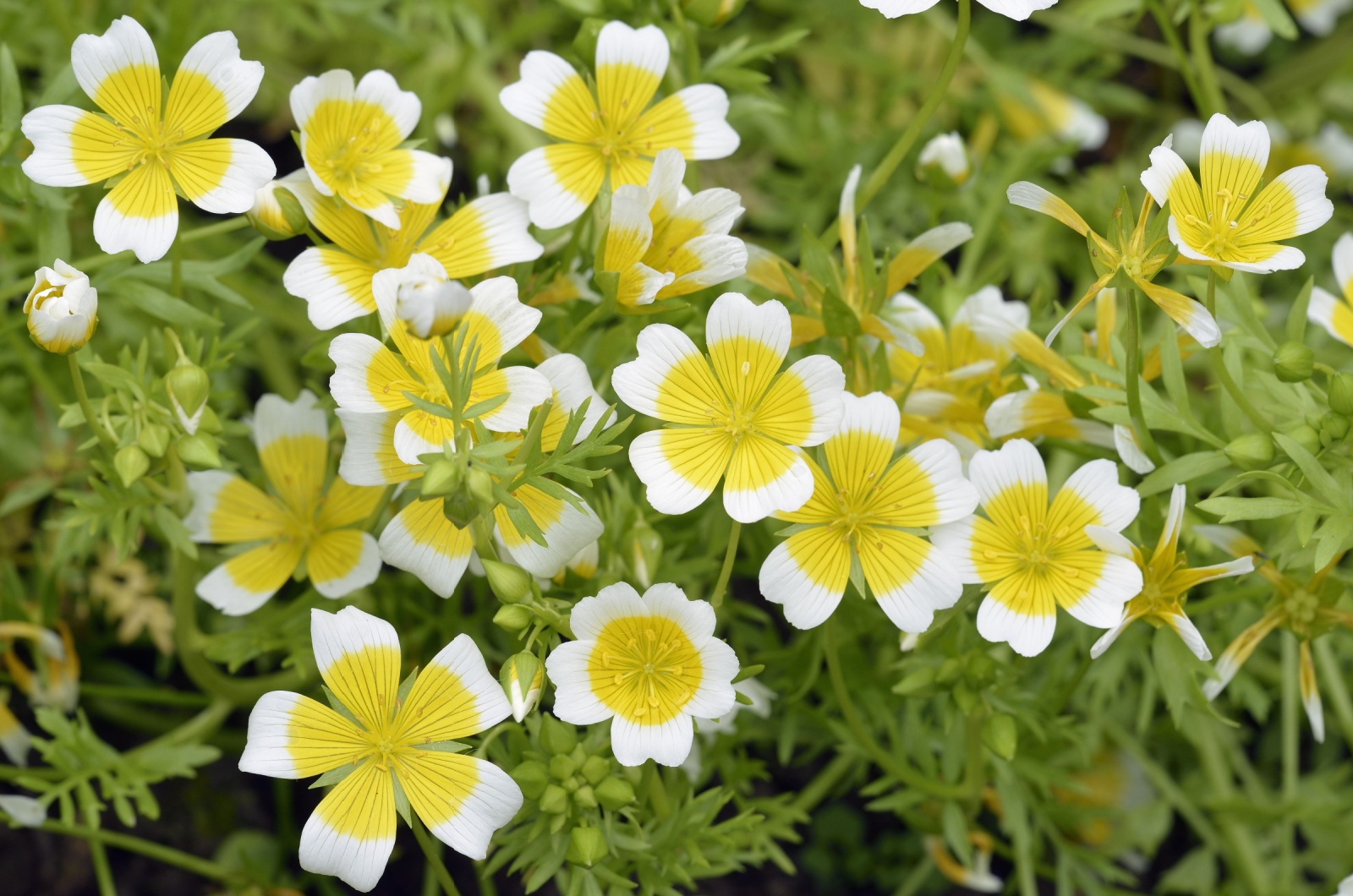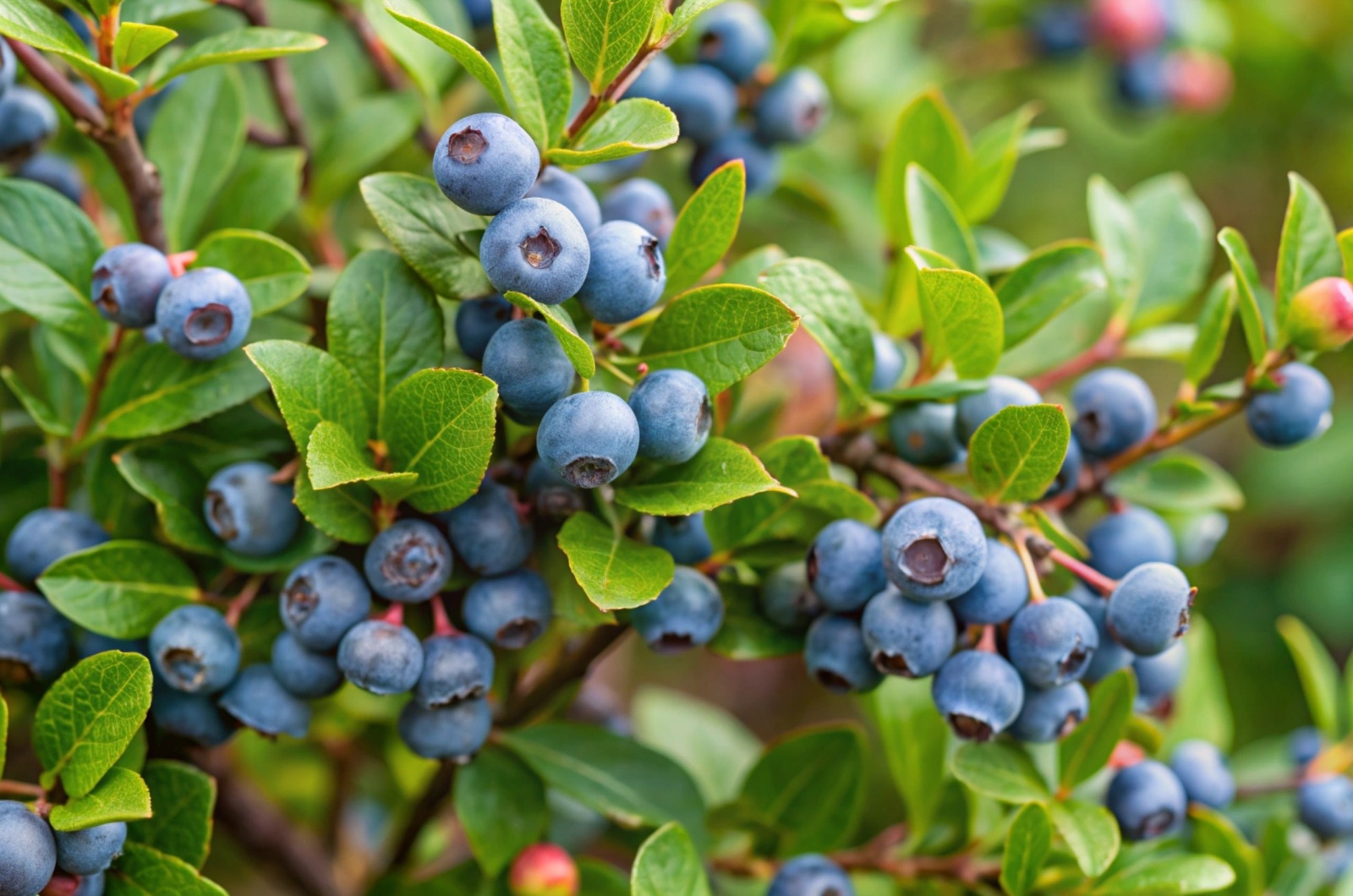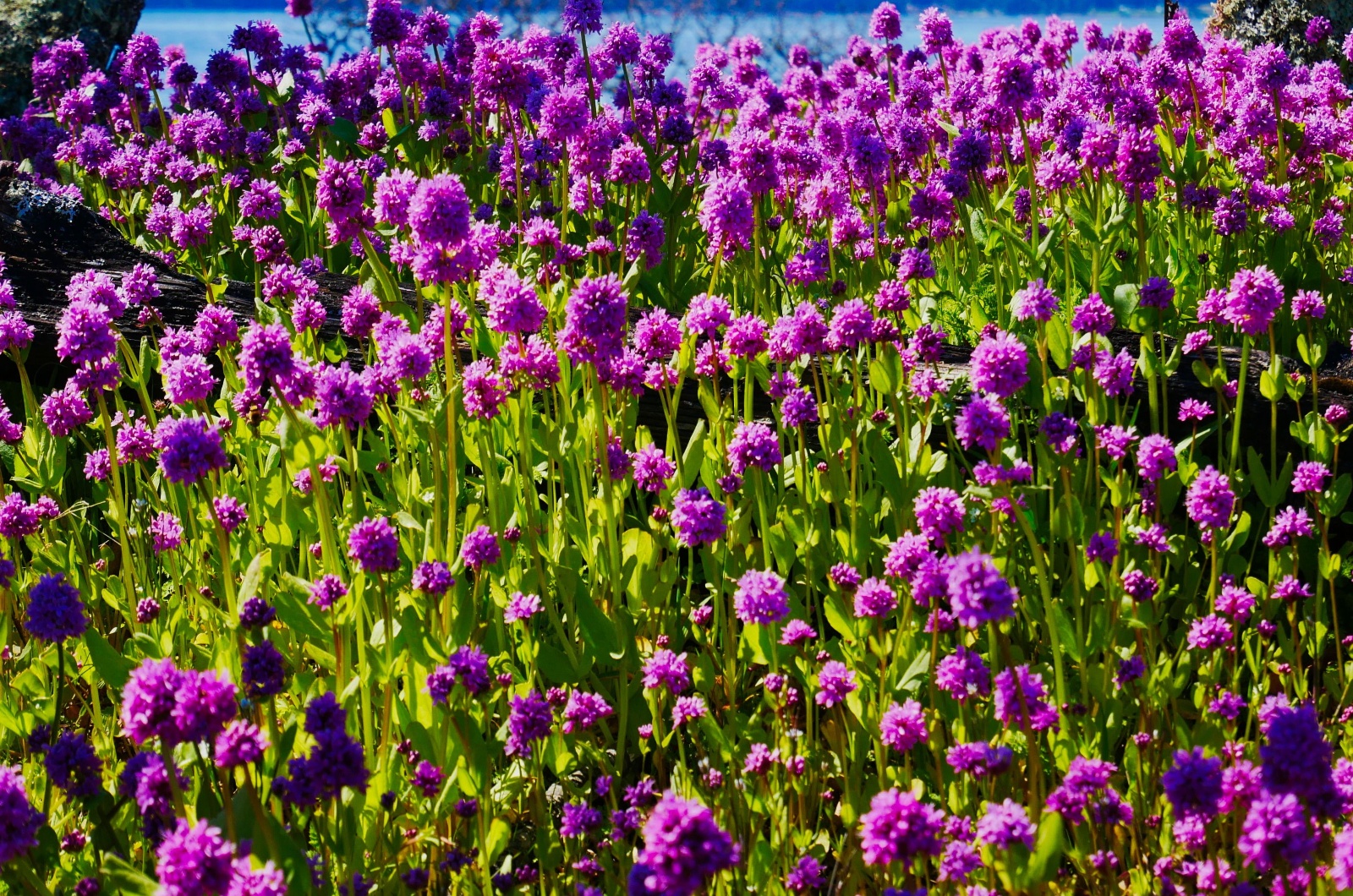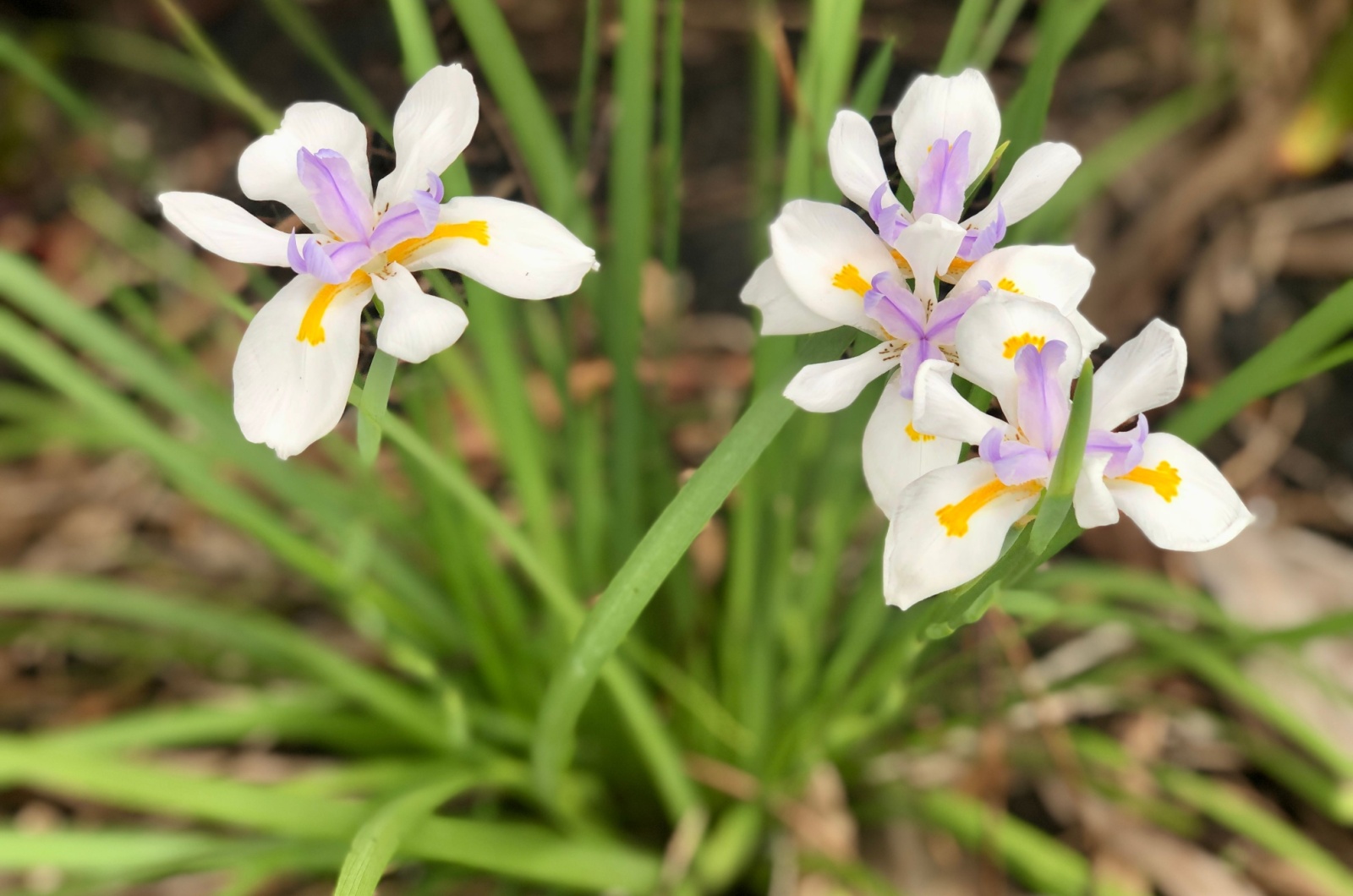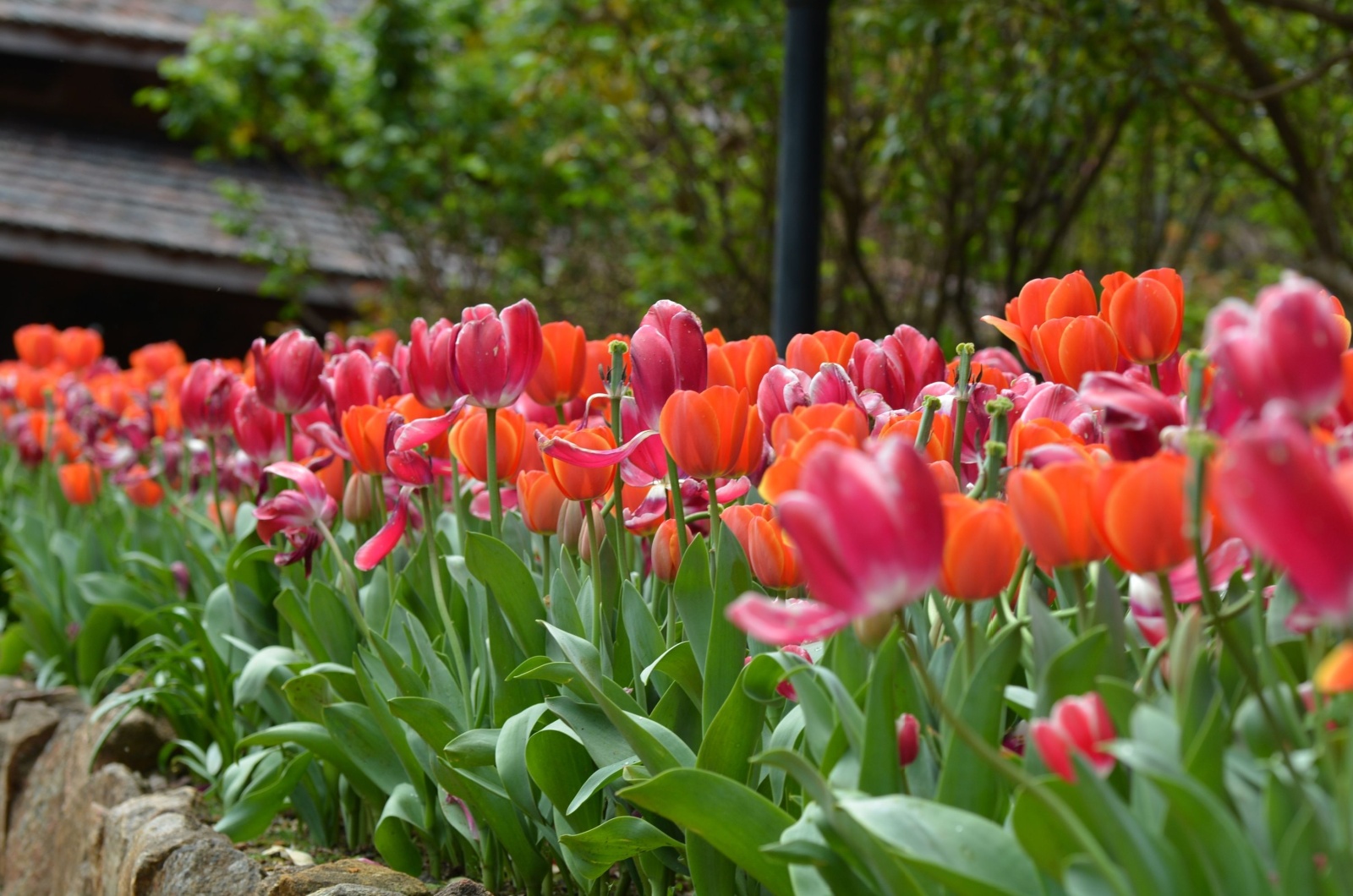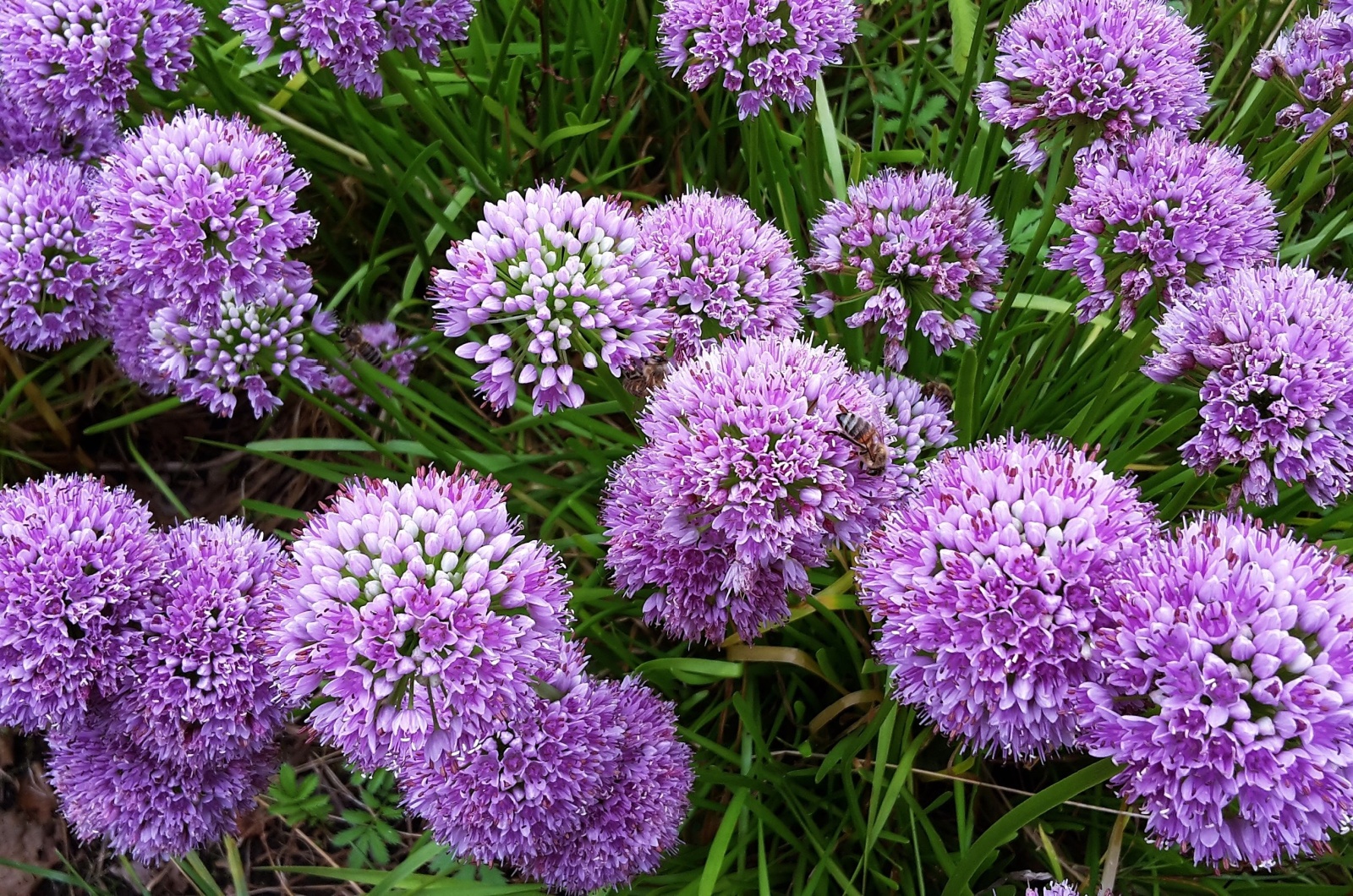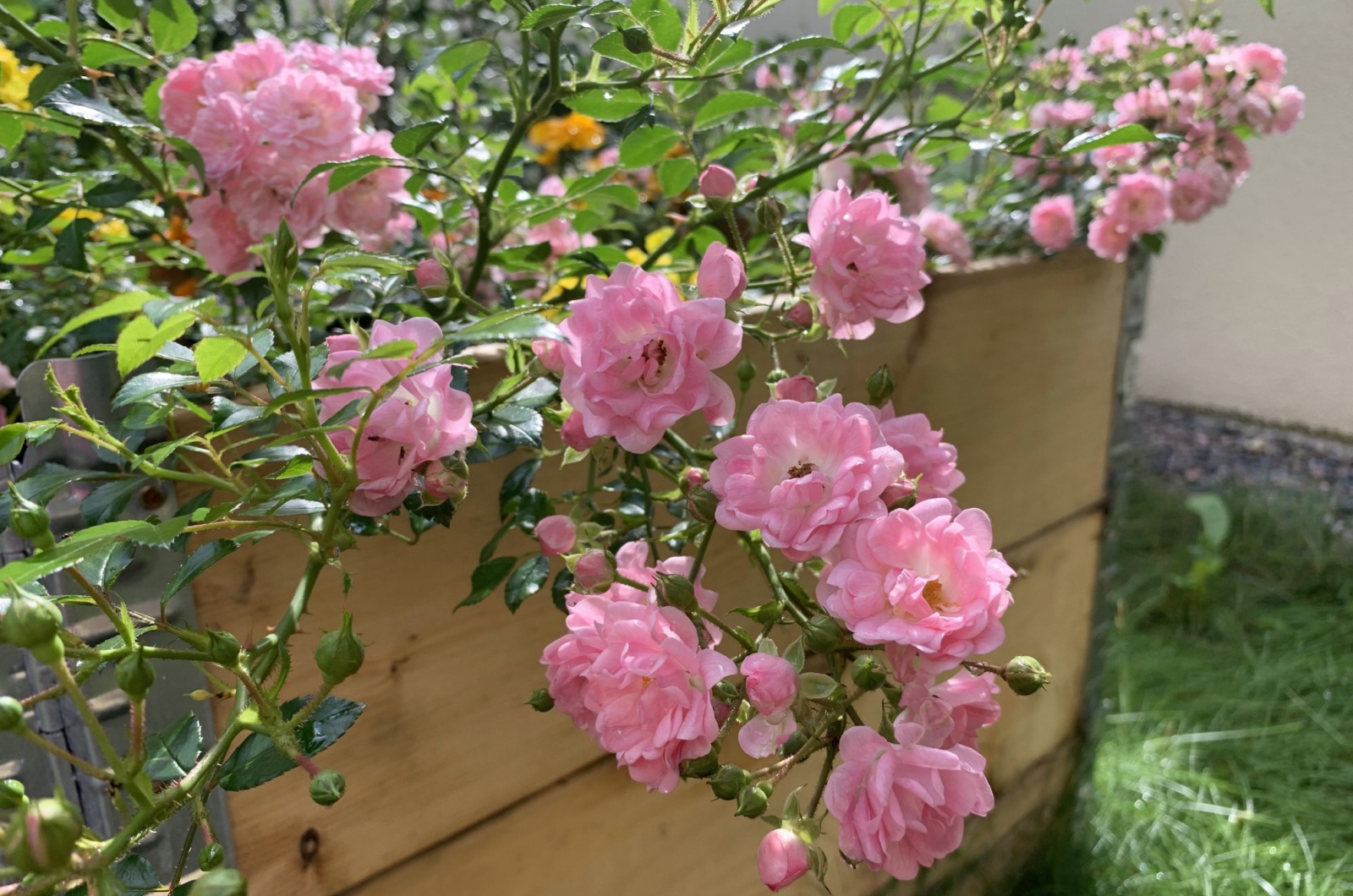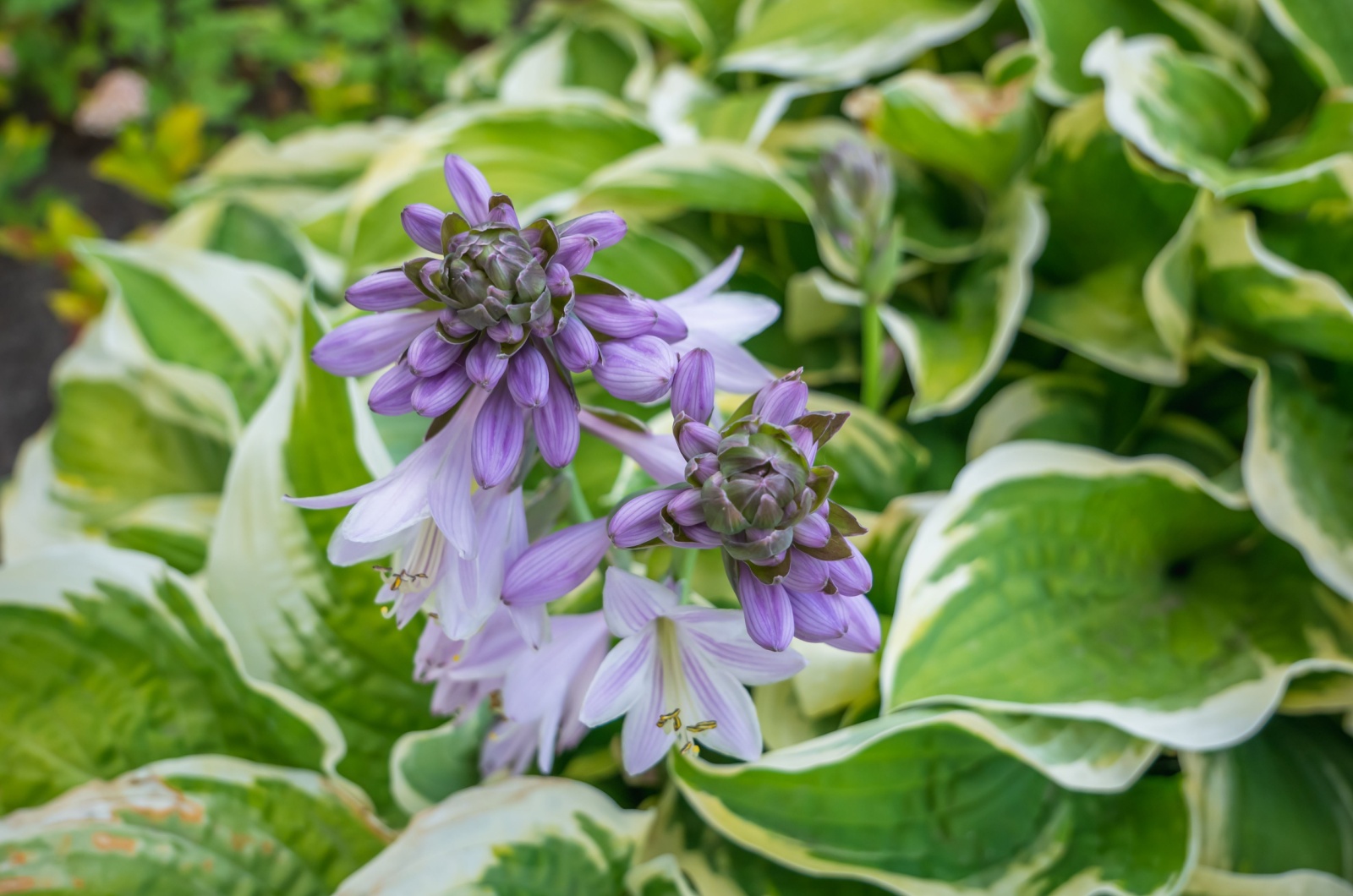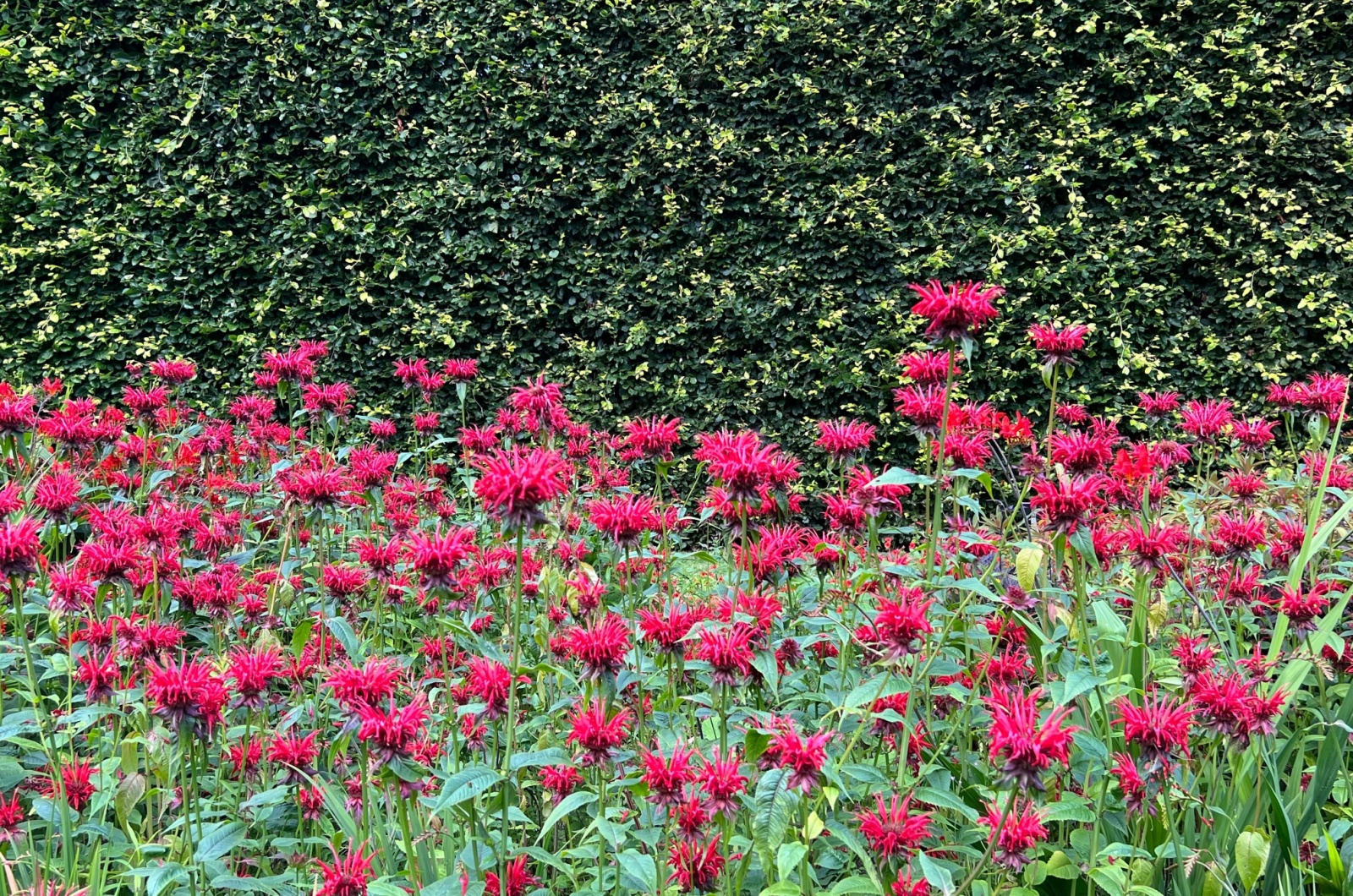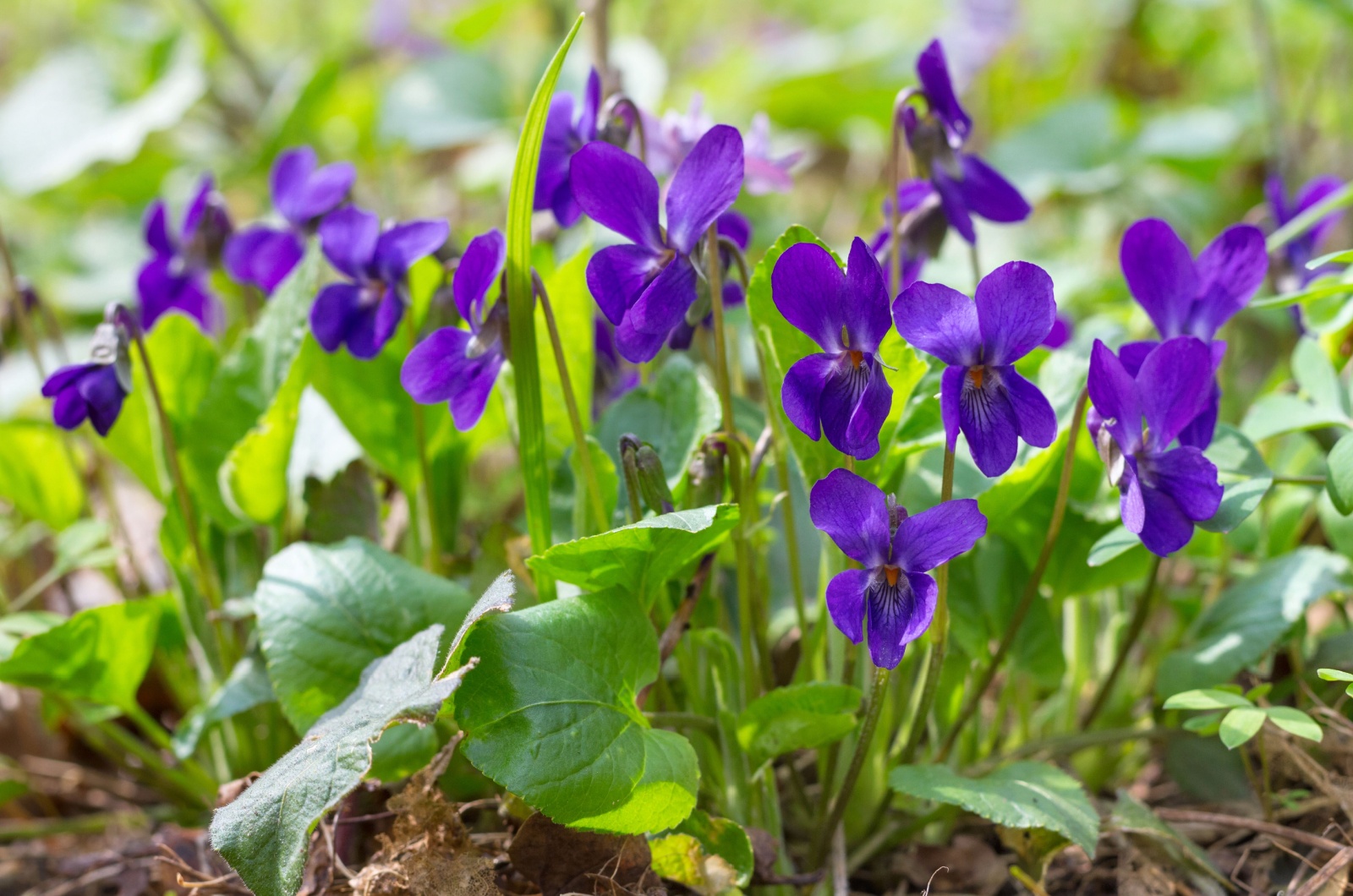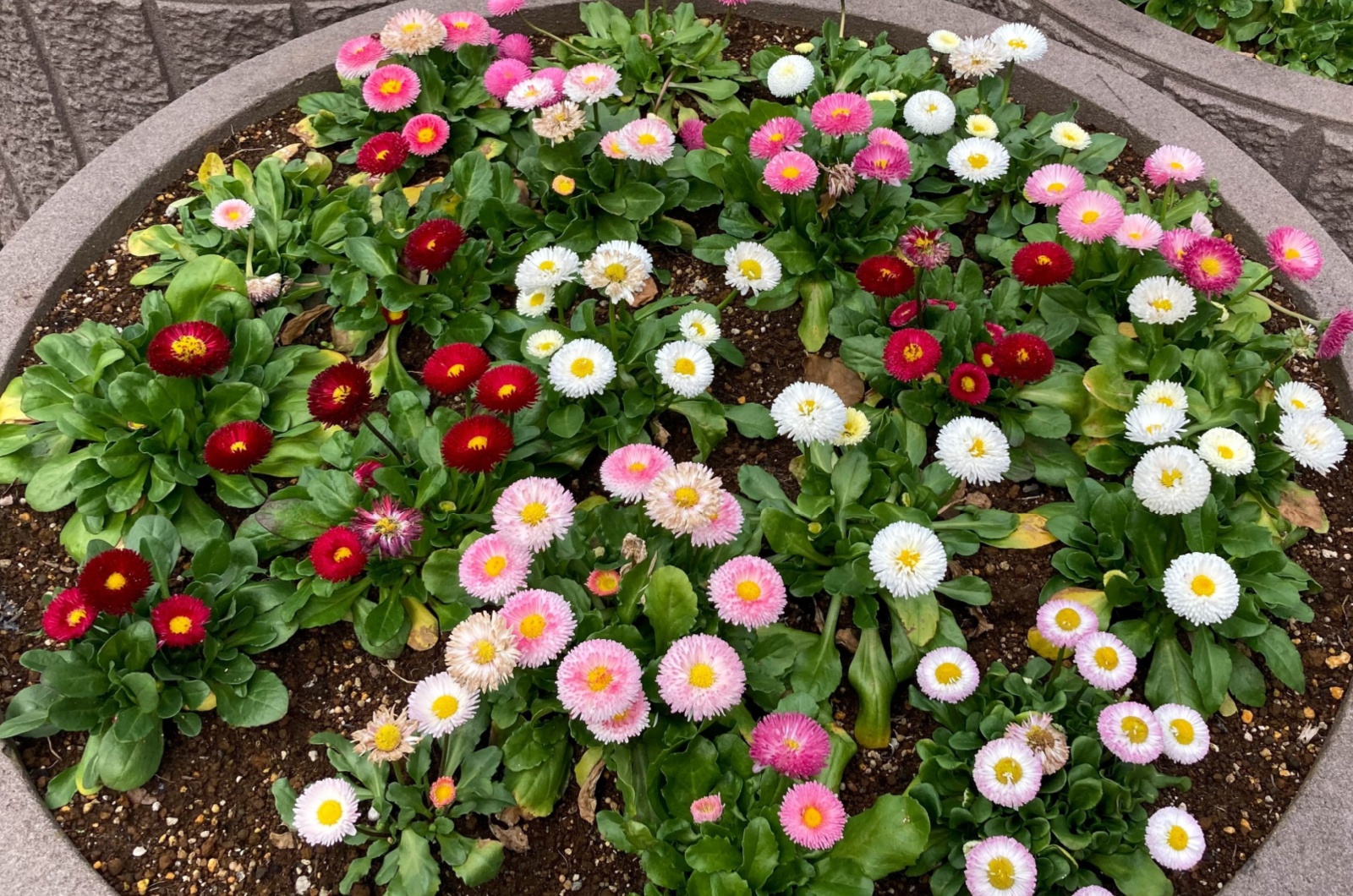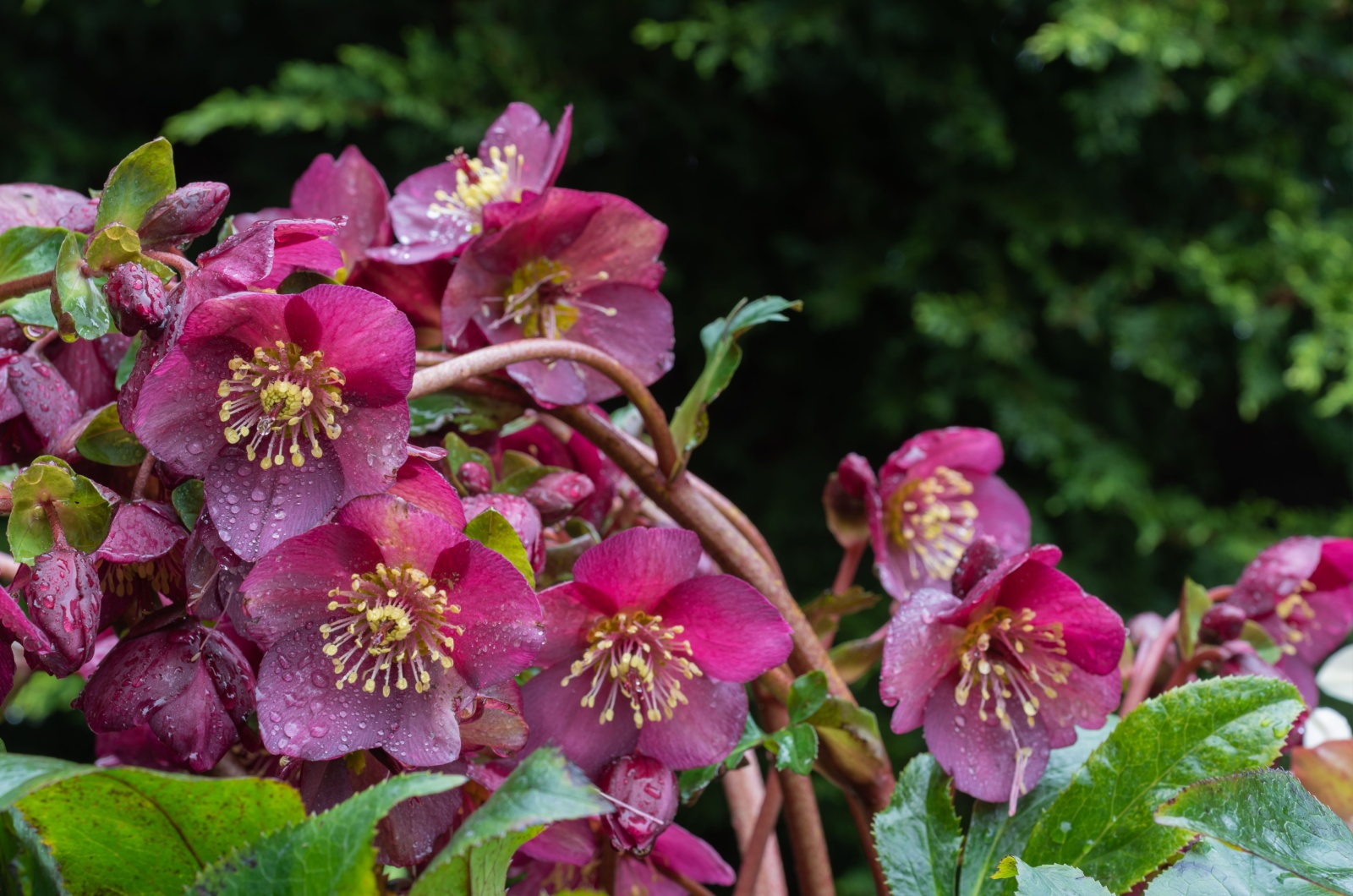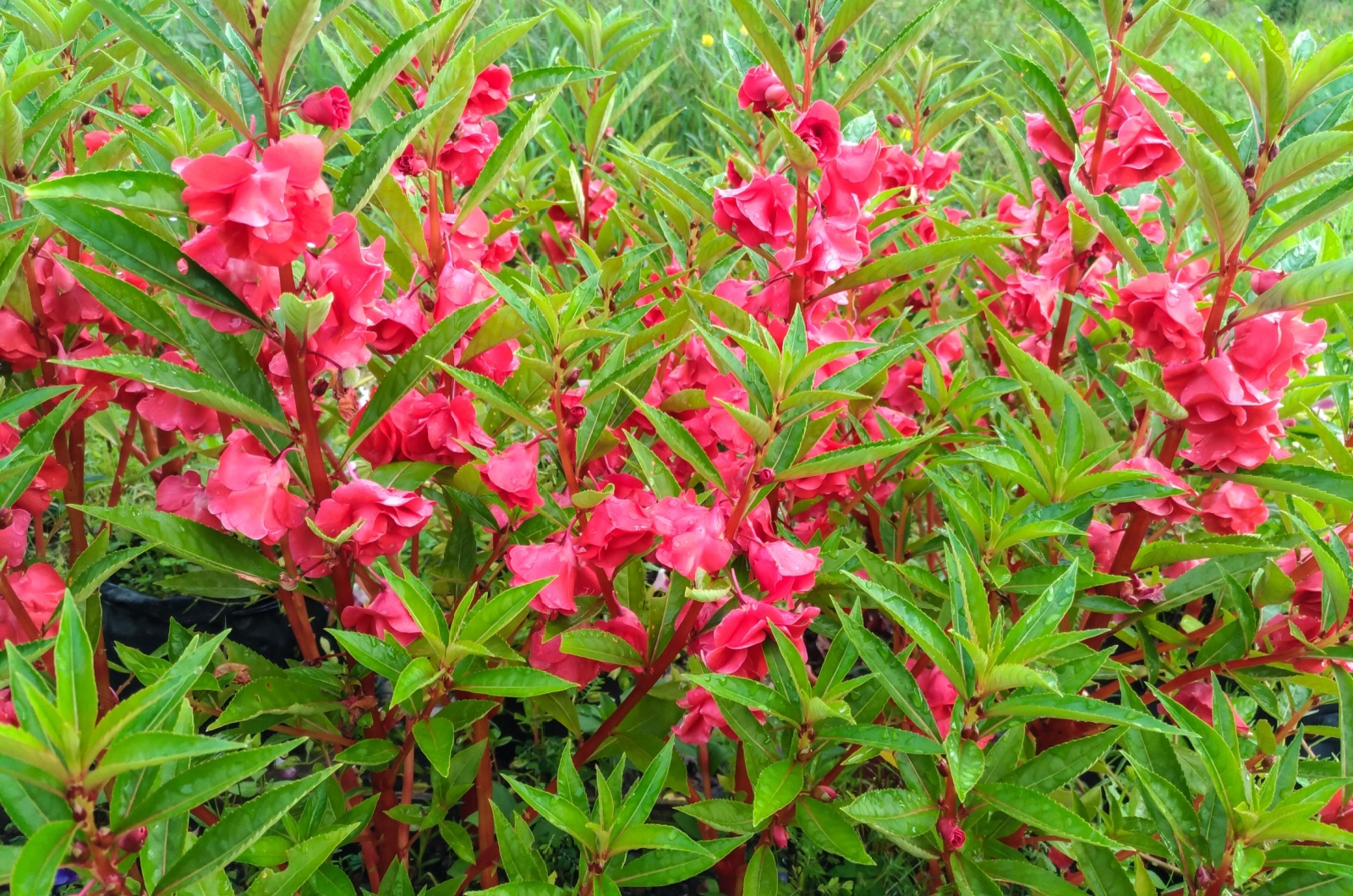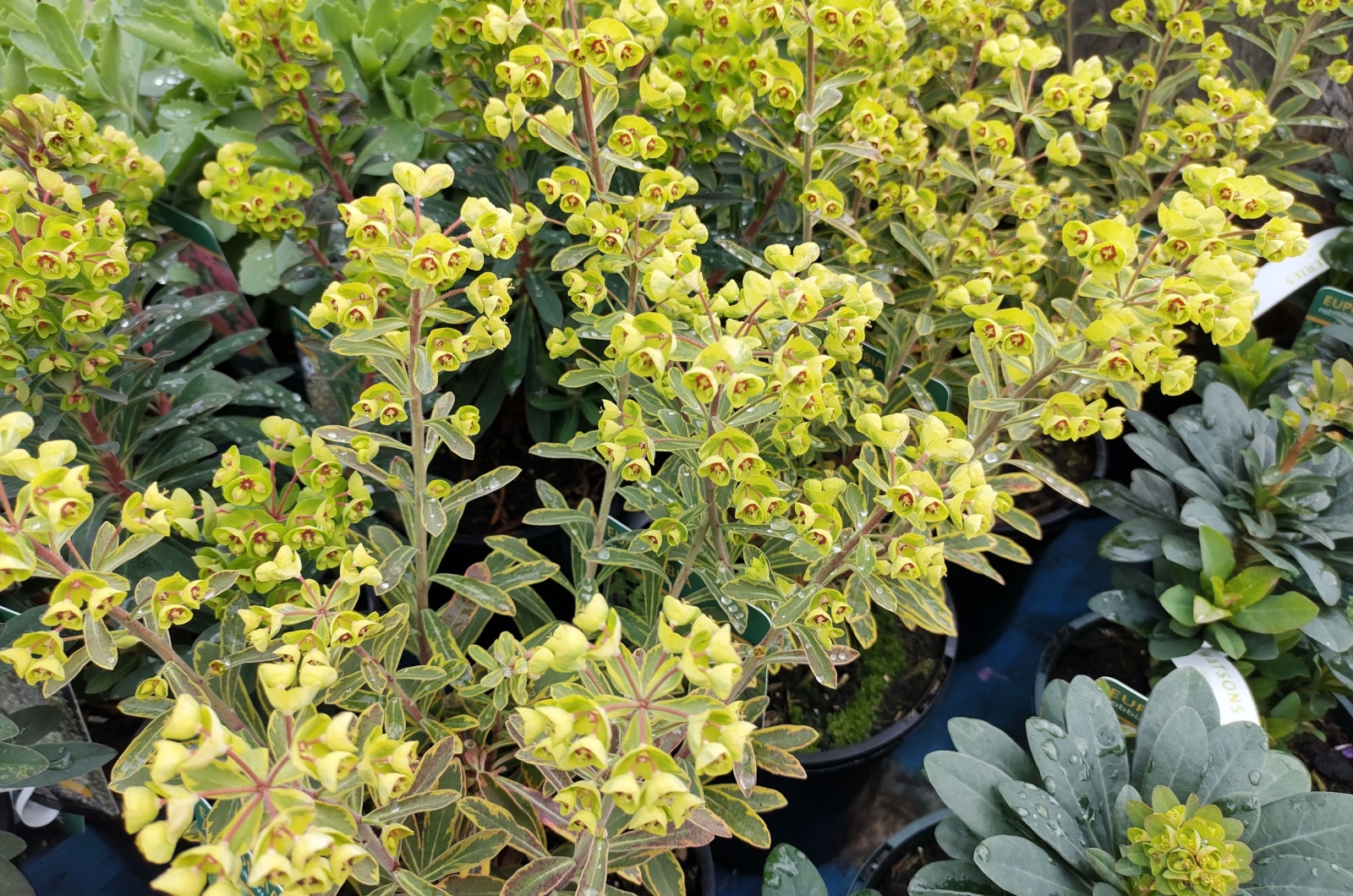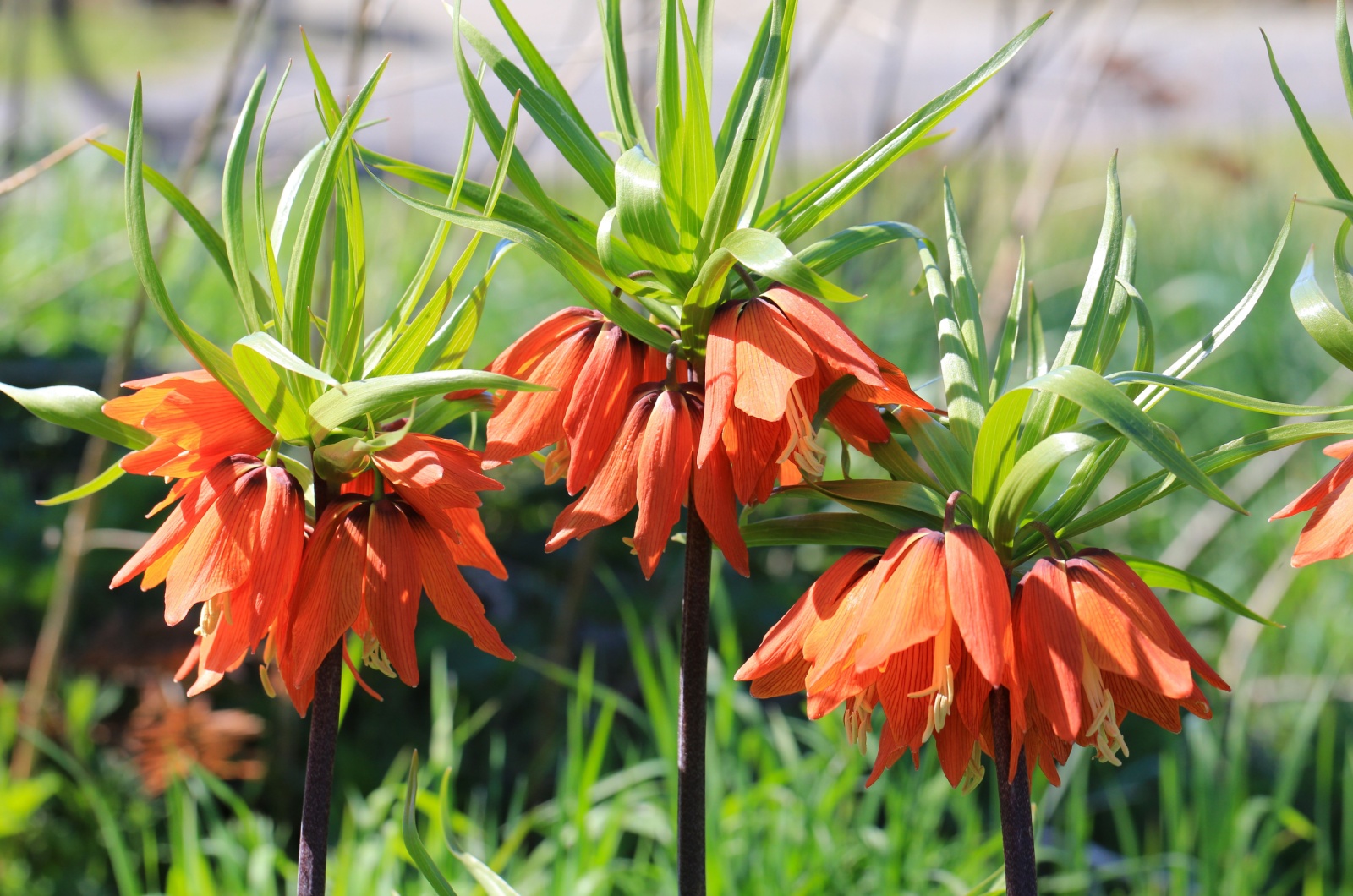I used to live in a place where rain wasn’t just a drizzle – it was practically a daily downpour!
My poor plants were constantly swimming in puddles, and I swear they started sprouting gills. This was all happening until I discovered this simple, yet effective solution: raised bed gardening!
Now, I’m not just talking about any old raised beds. These bad boys are like gardening life rafts, keeping your precious planets high and dry even when the clouds open up and the rain pours down like a waterfall.
If you’re in a similar soggy situation, stick around, as I’m about to share the best raised bed garden plants for those of us living in rainy climates.
1. Go With A Deer Fern First
What other way is there to start this list than going with the fabulous Deer fern first?
These fab ferns are deciduous, which means they’ll take their well-deserved nap in the winter. But come spring, they’re ready to soak up all that moisture and rain again.
Therefore, if you live in a place with lots of rain, you and your deer fern are going to become new best friends. Why?
Well, it’s because they are moisture-loving shade plants that thrive in wet raised beds – just give them moist soil, good drainage, a shady spot, and they’ll become little ferny miracles.
For the best outcome, plant these perky ferns in the fall or spring when the weather is cool, wet, and mild. You can grab live plants from a nursery or be adventurous and order spores online.
2. Jacob’s Ladder Can Grow All The Way To The Top
Looking for a non-invasive plant that will shine in a shady, wet raised bed? Look no further than Jacob’s ladder!
Although this is a perennial flower that naturally grows in Europe and Asia, it’ll absolutely thrive in the rainy, cool climates of North America.
This plant is all about shade, moisture, and nutrient-rich soil. Pair it with garden buddies like hellebores, hostas, and deer ferns for a stunning display (transform that dark nook in your garden into a vibrant blooming paradise!).
Over time, Jacob’s ladder will spread and form a lovely clump, with seeds that help it get to new areas. If you want to keep it contained, just snip off the spent flowers to prevent reseeding.
If you really like this plant and want to have some more, simply go ahead and propagate it!
Plant the seeds in early spring and keep the soil moist, and you should see sprouts in two to four weeks; or, divide the plants in early spring or right after they finish flowering.
3. Pansies Won’t Mind A Little Rain
I figured growing colorful pansies that keep up with the rain and still grow and thrive like nothing’s happening is one of the best options. Personally, I adore the purple and blue mixes, but you can also find stunning reds, yellows, oranges, whites, and pinks.
Turns out, pansies just love the extra moisture that rainy climates provide!
In areas with cool summers, they can grow in full sun, but they also do great in partial shade.
Although technically perennials, pansies often lose their vigor after a year and are usually grown as annuals in most garden zones.
For planting, get those transplants in the ground during fall if you live in a mild winter zone.
In cooler zones (five and below), plant them in spring. If you’re in a warm zone (nine and above), wait for the coolest part of the year to plant.
4. Siberian Bugloss Is A Sturdy Perennial
Before producing its large green leaves, this charming perennial starts with delicate, forget-me-not-like flowers (you definitely won’t forget these, especially after the rain!).
Perfect for cool, wet areas, this glossy plant thrives in well-draining soil with consistent moisture. If you’re bored of regular plants, you can go for variegated varieties like ‘Jack Frost’ and ‘Queen of Hearts,’ which are absolutely stunning!
These plants thrive in the shade and make a wonderful accent plant (grow them among taller perennials to get the full effect of their beauty!).
To grow Siberian bugloss, you can transplant a cultivar or start from seed in early spring, after giving the seeds a month of cold stratification.
5. Spice Things Up With Poached-Eggs
This plant’s name says it all – it grows stunning white and yellow flowers that look just like poached eggs (but you can’t scramble them, sorry!).
If you’re looking for a fun and unique addition to your garden, then this is the perfect choice for you. I mean, who doesn’t want to have literal poached eggs in their garden?
Originating from California and Oregon, this quirky plant can grow throughout North America, especially where winters are cold and summers are warm. Add them to your raised garden beds, and have a laugh anytime you look at them!
6. Juicy Highbush Blueberries Needs The Rain
Blueberry bushes turn that extra rainfall into sweet, juicy berries, making them the ideal plant for a wet raised bed!
These plants are not only productive but also aesthetically pleasing and pretty tidy. In spring, they produce white urn-shaped flowers that eventually transform into delicious blueberries.
One of my favorite varieties is ‘Duke,’ because of its larger-than-average blueberries (the bigger, the better). For a fun twist, try ‘Pink Lemonade,’ which tastes just like its name!
To get the most out of your blueberry shrubs, plant them in the fall if you live in a mild winter zone or in early spring if you face hard winter frosts.
Keep them well-watered throughout the year, and you’ll enjoy delicious, homegrown fruit for free!
This might be helpful: 10 Tried-and-true Tips For Growing Blueberries In Your Garden
7. Shortspur Seablush Blushes In The Rain
Shortspur seablush, just like our little poached-egg plants, is a Pacific Northwest native annual that loves consistent moisture and partial to full sun.
This delicate beauty starts off its blooming season in early spring with fiery red-pink flowers atop lettuce-like foliage (the view is truly breathtaking!).
What’s interesting is that the seablush reseeds easily and thrives when left undisturbed. It’s perfect for tucking into your raised bed or between other perennials and annuals.
In wet climates, seablush is especially prolific (no more overwatering issues, thank God!).
8. Butterfly Iris Spreads Its Wings When It’s Raining
The butterfly flower, aka a special iris with delicate fringes, makes a lovely addition to a raised bed alongside other spreaders (seriously, your garden will look like it came straight out of a fairy-tale!).
Its sword-like green leaves and clusters of white iris flowers blend beautifully with hellebores, sweet violets, and a bunch of other plants from this list. Plant one today, and you’ll enjoy butterfly flowers for decades!
Consistent moisture, soil that drains well, and some partial shade is all these evergreens need to thrive. It can handle two to six hours of direct sunlight daily and rewards you with endlessly blooming white flowers (plant some butterfly-attracting flowers to get the whole package!).
Butterfly flowers propagate easily through underground roots since they struggle to set seed. You can find them at nurseries, online, or perhaps dig some of your existing clusters in the fall (just make sure it still has some roots attached).
Plant them, and let the winter and spring rains help them settle in.
Want another iris in the game? Here’s How To Grow And Care For Siberian Iris Flowers
9. Tulips Are Always Thirsty For Some Raindrops
We all know that tulips are a must-have for raised beds in rainy climates.
Their gorgeous, cup-shaped flowers are signs of the spring, typically appearing a week or two after daffodils. These perennial bulbs are low-maintenance and flourish in wet conditions, making them perfect for your moist garden.
Two of my favorite tulips are called ‘Pittsburgh’ and ‘Flaming Flag’. Both are known for stunning purple shades (‘Pittsburgh’ is entirely purple, while ‘Flaming Flag’ also has white stripes).
When planting tulip bulbs in the fall, make sure to bury them at least six inches deep. They’ll sprout in early spring, bringing a color explosion to your garden.
In warmer zones (nine and above), tulips can still grow, but they act like annuals. In these areas, buy bulbs in the fall, refrigerate them over winter, and plant them in the spring.
Related: This Is The Best Way To Store Tulip Bulbs And Keep Them Ready For The Next Season
10. ‘Millenium’ Ornamental Onion Against All The Rainfall
Have you ever heard about a pretty flowering plant, that’s also an onion?
Meet ‘Millenium’, the ornamental allium that features magnificent bright pink blooms that are sure to turn heads. While it grows like the onions you’d find at the grocery store, ‘Millenium’ is in a league of its own when it comes to flowering.
Not only does this perennial catch the eye of visitors, but it also attracts important pollinators to your garden. With its nectar-rich flowers, pollen, and abundant foliage, it’s a true haven for local wildlife.
To plant ‘Millenium’ onions, wait until early spring, after the threat of frost has passed. This beauty thrives on moisture during the growing season and absolutely loves soaking up the sun in its full glory.
For an extra stunning display, plant it alongside garden roses, poached eggs, and crown imperial (all of these can survive in a rainy garden).
11. Every Rose Has Its Raindrops
Roses, the timeless darlings of gardens worldwide, have been cherished by gardeners for centuries.
With thousands of varieties available, ranging from petite dwarfs to majestic climbers reaching over 20 feet tall, there’s a rose for every garden (they are truly the IT flowers).
In rainy climates, I recommend opting for compact, disease-resistant varieties. These resilient roses can withstand all of these wet challenges and still effortlessly complement other plants in your garden.
For a splash of sunshine, consider ‘Sunspot,’ a cheerful yellow variety, or add a touch of romance with ‘Red Ribbons,’ a stunning red variety.
Climbing roses, with a bit of support from a trellis or fence, also thrive in raised beds.
While roses can be grown from seed (albeit slowly!), experimenting with them can be quite an adventure.
You can go ahead and plant seeds half an inch deep in early spring, but make sure they stay moist.
And with a little patience, they’ll sprout within a few days to a few weeks!
Here’s what I meant by experimenting: Plant Roses In Tomato Slices And Watch The Magic Happen!
12. Save A Spot For Plantain Lily In Your Raised Bed
Plantain lilies, also known as hostas, will simply take your breath away with their mesmerizing foliage.
These precious plants sprout heart-shaped leaves with striking veins, and with thousands of cultivars to choose from, there’s a hosta for every gardener.
From dwarf-sized varieties standing less than a foot tall to giants reaching three feet in height and six feet in width, hostas come in all shapes and sizes, making them superb for containers of any size (I used to combine different varieties for layering).
Looking for a show-stopper? Give ‘Sum and Substance‘ a try for its towering presence.
Prefer something smaller? ‘Blue Mouse Ears‘ is perfect with its petite blue-gray leaves.
Adore variegated leaves? ‘Great Expectations‘ or ‘Gold Standard’ won’t disappoint.
You can expand your collection by transplanting divisions from a friend’s clump or by exploring cultivars online or at nurseries.
Related: 2 Jobs You Should Do With Hostas Before Winter (And 1 To Avoid)
13. ‘Jacob Cline’ Bee Balm Doesn’t Need An Umbrella
Want to spice things up in the garden? Plant ‘Jacob Cline’.
This is a prolific bee balm variety known for its vibrant red blooms that attract hummingbirds and pollinators, making it a must-have for any garden.
You won’t be having issues with powdery mildew anymore as this plant is highly resistant to this nasty fungal disease.
And with its strappy green leaves and continuous summer blooms, this perennial is definitely a show stopper (especially if you deadhead the spent flowers).
Unlike some varieties, ‘Jacob Kline’ is less prone to forming seeds, meaning it stays confined to the area you plant it in. However, it does spread through underground runners, so keep an eye out for new stems and remove them from unwanted areas.
Can’t find ‘Jacob Kline’? Not to worry because other red-flowering varieties like ‘Adam,’ ‘Mahogany,’ and ‘Cambridge Scarlet‘ are readily available online or at local nurseries.
14. Sweet Violet Won’t Melt In The Rain
You probably know about sweet violets from literature, paintings, or perhaps herbalist books. And me? I know about them from my Grandma’s garden!
I’ve noticed that sweet violets can produce fragrant purple blooms even when grown in shade (I‘ve always admired their sturdiness and beauty!). Once I started growing them in my garden, I liked them even more.
Turns out, this plant can spread eagerly by seeds and runners, which makes it a great choice for filling empty spots in a raised bed.
There are some unique cultivars to explore, like ‘Rosina,’ (known for its delicate pink flowers), and ‘Royal Robe,’ (my personal fav, thanks to those dark purple hues!).
While sweet violets prefer shade, I’ve noticed that they can also handle full sun in cooler summer climates.
To grow this perennial, you can start from seeds, runners, or divisions. If you plan on going with seeds, plant them in early spring after the frost has passed, and keep them moist until they sprout.
Want to grow a pink garden? Here’s A List Of 25 Gorgeous Pink Perennial Flowers For Every Season
15. Common Daisy For Common Rainy Gardens
You might think that a common daisy is a delicate and fragile little plant, but you couldn’t be more wrong. In fact, these are one of the most resilient and versatile plants that can truly shine in a raised bed garden.
With its spoon-shaped leaves and charming white, red, and pink flowers, this perennial adds elegance wherever it spreads.
Modern gardening offers a whole bunch of showy cultivars with unique features. ‘Alba Plena’ with its multi-layered white petals, or ‘Floro Pleno’ which brings a similar layered look in vibrant red.
For a splash of pink, ‘Double Pink‘ is an adorable option with its double-petaled pink and white blooms.
Growing common daisies is a breeze no matter if you start from seeds or divisions. However, be cautious because this hardy plant can become invasive in rainy climates.
16. Hellebore Can Handle The Rain
I am definitely sure that hellebores are a delight for every gardener, no matter your favorite color.
These cheerful plants come in many shapes, sizes, and colors (thanks to the many species that hybridize readily).
They are all recognized by their clusters of nodding flowers that bloom in late winter and early spring, making your garden look pretty super early in the season.
If you’re a fan of black flowers, ‘Midnight Ruffles‘ is the plant for you. For those who prefer green blooms, any variety of *Helleborus x sterni will do the trick.
Hellebores thrive in the moist conditions of a raised bed rain garden but can struggle with too much sun.
To give them the best start, transplant them into your raised bed in the fall or right after they finish flowering in the spring.
Related: Where To Plant Hellebores For The Best Flower Display
17. Balsam Against The Rain
Balsam is another wonderful annual for gardeners in all zones.
The blooms, ranging from white to pink and red, are a magnet for bees and other pollinators. And also, the seed pods explode with a touch, making everything more exciting (I’ve seen it with my very own eyes!)
This plant thrives in a sunny raised bed but can handle dappled shade in areas prone to heat waves. In regions without winter frost, balsam can spread rapidly and self-seed easily. But in colder climates, frost will kill the plants, and their seeds often struggle to germinate (such a shame).
Plant balsam after the last frost has passed. I like to start these annuals from seed indoors in 5-inch pots, giving them a head start before transplanting them outside once the weather warms up.
18. Make Some Room For ‘Ascot Rainbow’ Spurge
The name ‘Ascot Rainbow’ says it all for this stunning Euphorbia!
With its pink, green, yellow, red, and purple colors, the plant truly looks like a rainbow (just don’t cross under these flowers!).
‘Ascot Rainbow’ is quite adaptable, thriving in both sun and shade, and it loves plenty of water during the growing season. Surprisingly, it can also tolerate drought and thrives in various soil types.
In freezing climates, this perennial may lose its evergreen leaves, but don’t you worry! Just wait until spring to see if it bounces back as it often sprouts new growth when the weather warms.
This variety doesn’t grow from seed and is best bought from nurseries or online. You can also propagate it from an existing plant.
Just take six-inch cuttings in the spring, remove the blooms, and place the cuttings in moist soil. They’ll root in a matter of weeks, but only if you keep them in partial shade.
19. Crown Imperial For The Royal Ending
In case you didn’t know, the crown imperial is a stunning old-world plant that truly stands out in raised bed rain gardens.
Its fragrant, fleshy stem and bulb have a musky scent that some might find a bit off-putting, but its prominent red, orange, and yellow flowers make up for it.
To grow crown imperial, start with bulbs, which you can easily find online or at big-box nurseries. This plant enters dormancy in the summertime, losing its foliage and becoming drought-tolerant.
During this period, it needs less water but remains tolerant of wet conditions.
In fall, winter, and spring, crown imperial thrives in consistently moist soil, making it an excellent choice for rainy climates, especially those with warm summers.
For the best growing results, plant crown imperial in full sun, particularly if your garden is cool year-round.
Raised beds make gardening enjoyable, even with all the rain. Who knew raising plants a little higher could make such a difference?
Now I want to ask you this: Have you tried them yet? What plants work best for you? Any funny or frustrating garden stories? Don’t forget to share them all with me (and also send some pics of your precious flowers after the rain).
Also read: 3 Reasons Why You Shouldn’t Use Wooden Raised Beds + The Solution

